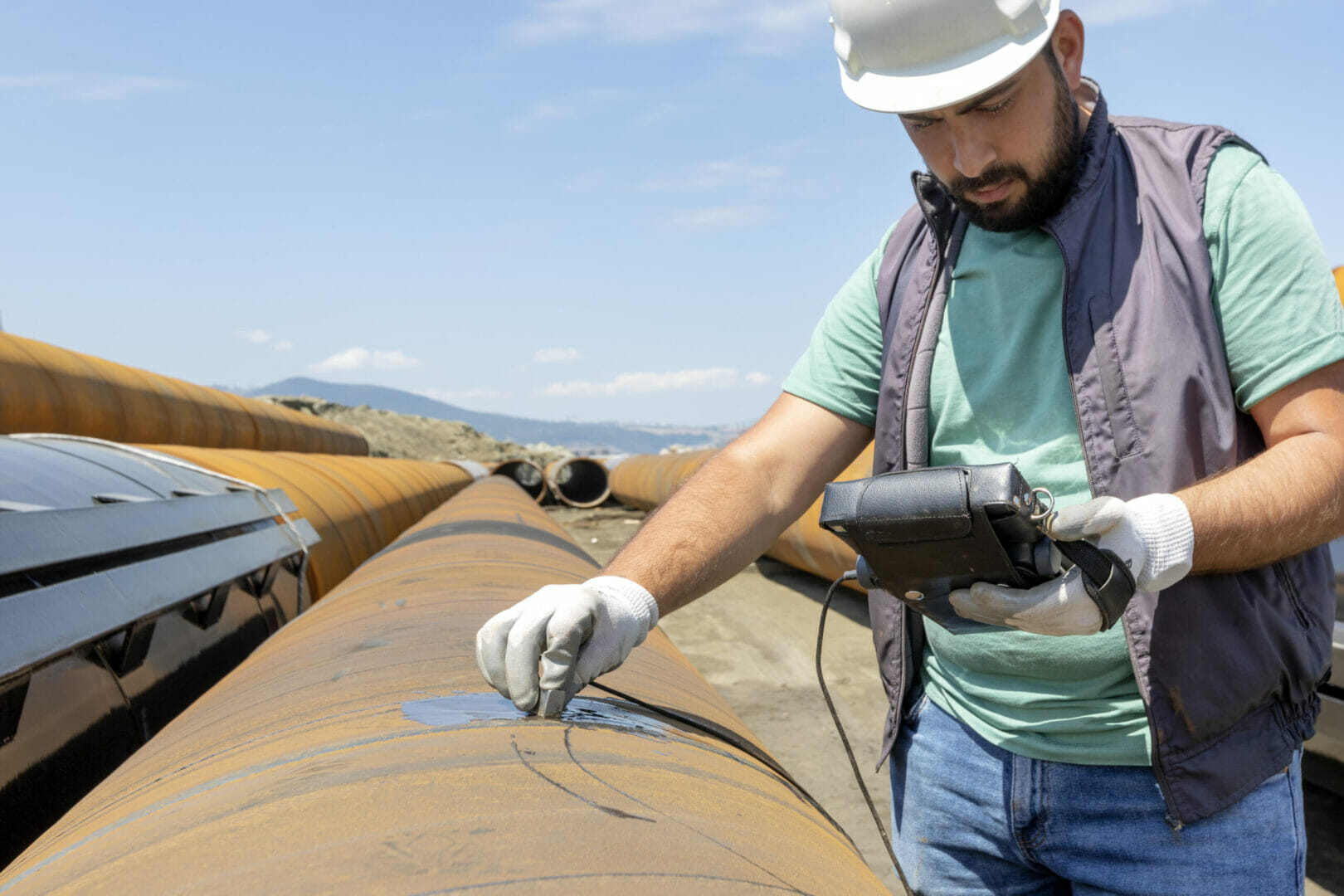
If you’ve been to any industrial company, you might be familiar with a couple of testing methods field workers administer before and after a large-scale project or operation.
These testing methods aim to identify future risks and are incredibly important when creating a design plan. Of course, there are other uses for these techniques. The construction industry, in particular, conducts testing methods to assist with engineering decisions and prevent catastrophic accidents that may result from negligence. Moreover, testing is often a requirement for medium and large-scale projects. Hence, testing is a must if you’re in the construction industry.
Unfortunately, to collect data, inspectors usually scrape away a piece of the equipment or material for analysis, which means while it does help to an extent, it also damages the object.
On the bright side, there are testing methods that don’t require you to damage the material or alter it in any way. These are called non-destructive testing methods, also known as NDT.
What Is A Non-Destructive Testing Method?
Non-destructive testing (NDT) methods are testing techniques that allow you to evaluate the property or state of a system, component, or material without causing damage to the object.
The most basic NDT methods only require the simplest tools, such as a flashlight, while others don’t need a tool at all. However, methods that allow you to collect a wealth of information regarding the equipment would require you to get the right NDT equipment from a certified distributor. Nevertheless, if you’re curious as to what these techniques are, here are five non-destructive testing methods and applications in construction.

- Visual Testing
As the name implies, this NDT method allows you to collect data on the property or status of an object by simply examining its appearance. It doesn’t require any special tool, and inspectors can do it with the naked eye. Of course, you may have to use flashlights if it’s dark or a camera if a recording is necessary. Regardless, visual testing is a simple way to examine an object.
In some cases, inspectors may also use a drone to position the camera and use specialized software to add depth to the recording, but this would only apply for complex operations.
- Radiography Testing
Radiography testing follows the same concept as visual testing in the way that it provides you with a visual representation of the material to identify any defects or imperfections.
However, rather than doing it with the naked eye, radiography testing makes use of a tool that directs radiation into the material. Inspectors will then use a separate device to detect the movement of the radiation energy to get a reading of the material called a shadowgraph. A shadowgraph will then reveal several aspects of the inspected object, such as abnormalities in density. Again, since it uses radiation energy, it doesn’t cause any damage.
- Eddy Current Testing
Eddy current testing, also known as electromagnetic testing, is a technique that makes use of electrical currents to collect data regarding an object. When inspectors conduct this method, they first use a tool to create a magnetic field surrounding the object. Afterward, they direct several waves of electric currents. By doing so, they can detect any abnormalities, which can be identified when there are interruptions on the electrical current.
Naturally, this would require you to use a special tool or equipment, but it’s an effective NDT method nonetheless, for many reasons. For one, it doesn’t cause damage to the material.
Eddy current testing is also reasonably accurate, especially when it comes to detecting flaws on the object’s surface. But most importantly, inspectors can automate the testing process, which can be incredibly convenient. However, you must remember that it’s only effective on conductive materials. This means it can be challenging to conduct this testing method on reinforced plastics.
- Vibration Testing
As the name implies, vibration analysis is a method used to monitor the status or condition of equipment or materials by rotating the object and analyzing its vibration patterns.
The concept behind this method is that different materials vary in vibration signatures. And when there’s a defect, such as misalignments, acceleration, and looseness, the vibration changes accordingly. To conduct this NDT method, inspectors may require a vibration meter device, although there are several other devices that can measure and detect vibrations.
Take note that while it does require you to rotate or move the material or equipment, it normally doesn’t lead to any damages, which is why experts still consider it an NDT method.
- Ultrasonic Testing
Ultrasonic testing is a technique that involves transmitting sound waves into an object or material and observing any changes to its behavior or properties. It’s an excellent technique if you want to detect imperfections or defects on an object. Ultrasonic testing has several advantages over other methods. For one, it allows inspectors to detect flaws hidden deep inside the object.
Moreover, this method usually has a relatively high sensitivity, which means you can identify even the slightest flaws. Lastly, when conducting this method, you only need to contact any surface of the object, regardless of whether it is the top or bottom region. This is mainly because it’ll cover the entirety of the material or component via sound waves either way.
However, since it can be a bit technical, not many inspectors are familiar with this method, not to mention it also requires a special tool. Ultrasonic testing consists of several types, including:
- Automated Ultrasonic Backscatter Technique (AUT)
- Internal Rotating Inspection Systems (IRIS)
- Long Range Ultrasonic Testing (LRUT)
- Phased Array Ultrasonic Testing (PAUT)
- Time-Of-Flight Diffraction (TOFD)
Since this method mainly uses sound waves, it doesn’t cause any damage to the material whatsoever, but you must still practice caution when conducting ultrasonic testing.
Conclusion
Testing your company’s equipment and materials is an essential step to any project, particularly large-scale operations. However, while it does have the potential of saving you money, it can also be quite costly, especially if you’re using a destructive method. If you’re not a fan of damaging your equipment for testing, you may want to look for non-destructive testing methods instead, this article should provide you with several options.
